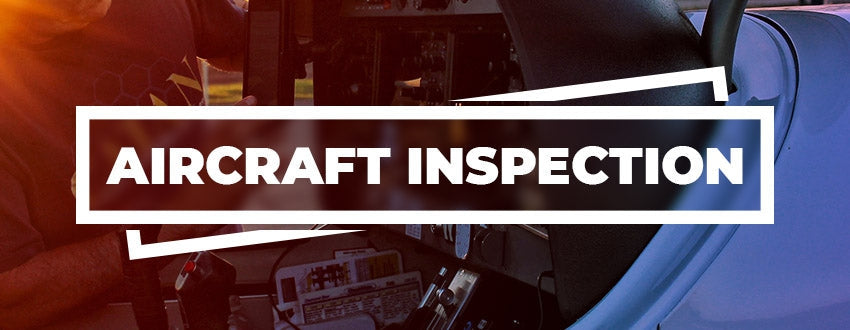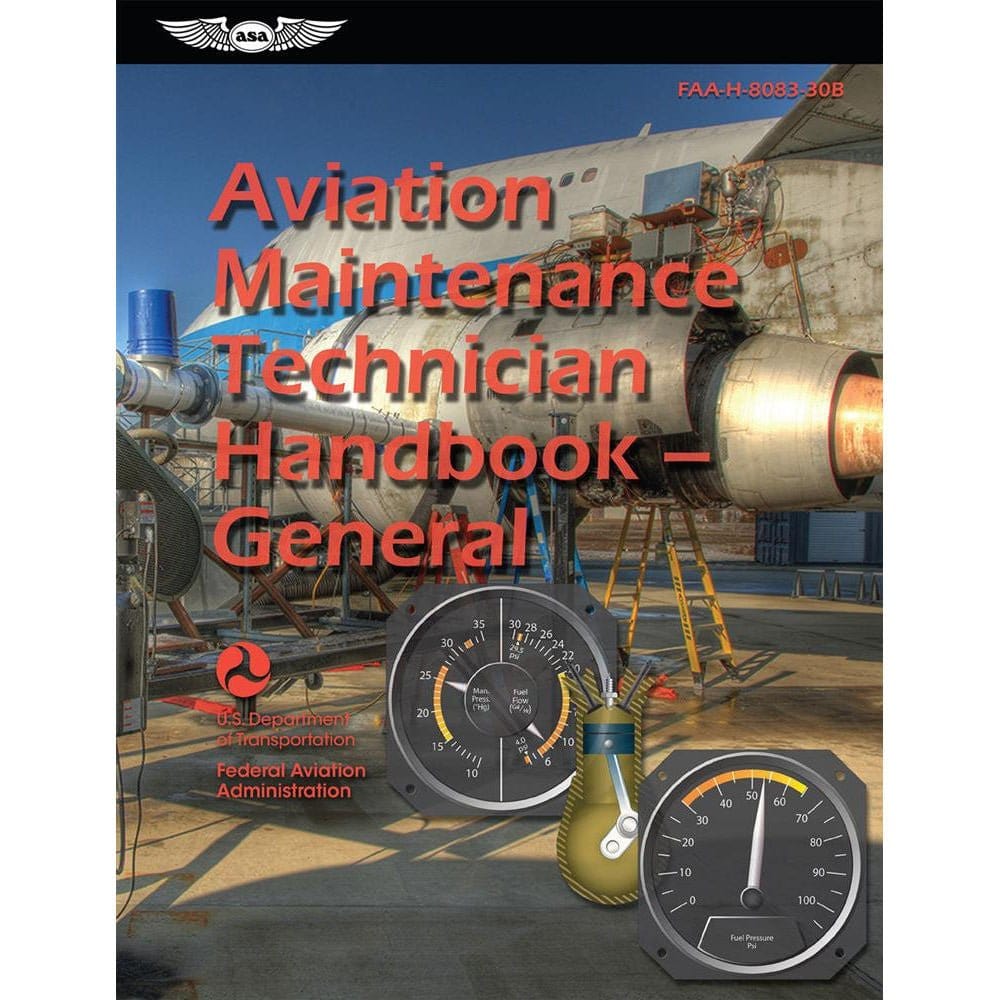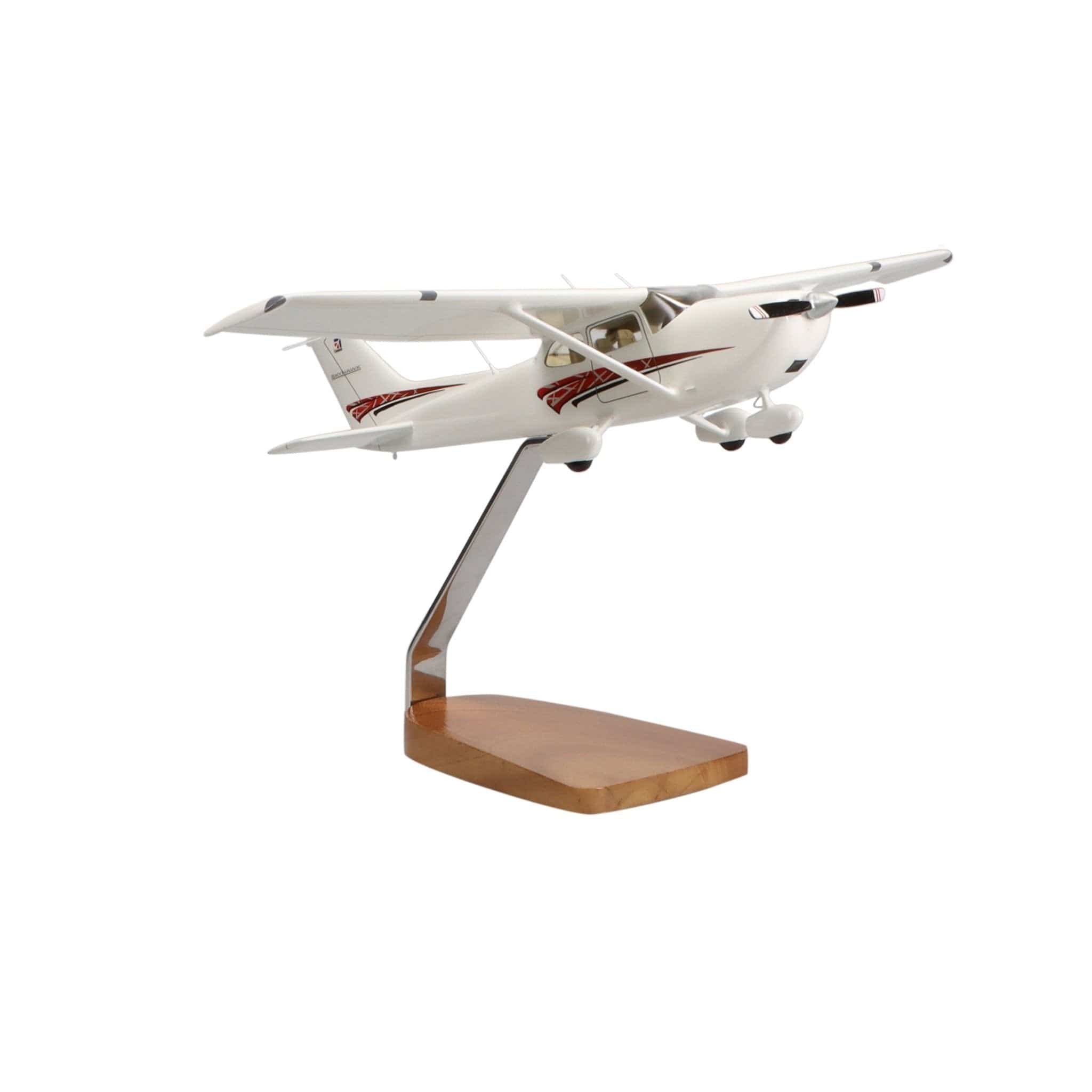While driving, a simple call to roadside assistance can easily solve any car troubles. However, with airplanes, even minor mechanical or electrical failures have the potential to be catastrophic.
Unlike cars, there is no breakdown lane in the sky, making aircraft inspections invaluable for preventing and addressing airworthiness issues before they become dangerous.
By staying on top of scheduled inspections and unscheduled inspections, pilots are contributing to keeping their planes safe and up to FAA standards for years to come.
In this guide, we will cover everything you need to know about aircraft maintenance and inspections for your plane's airworthiness. Get out those aircraft logbooks and get ready!
Table of Contents
- Scheduled Aircraft Inspections
- Annual Inspection
- 100-Hour Inspection
- Progressive Inspections
- Transponder Inspections
- Emergency Locator Transmitter Inspections
- IFR-Specific Inspections
- Preflight Inspections
- Unscheduled Aircraft Inspections
- Airworthiness Directives
- Ramp Checks
- Unforseen Maintenance
- Takeaway
 Scheduled Aircraft Inspections
Scheduled Aircraft Inspections
Some inspections are required by the FAA and are designed as a form of preventative maintenance to ensure aircraft remain airworthy. You know about these well in advance can plan for them.
The requirements vary depending on how the aircraft is being used, whether it is being flown in IFR conditions or solely VFR. Aircraft used for compensation or hire will have more frequent inspection requirements than those used solely for recreation.
These types of planned, routine aircraft maintenance are called scheduled aircraft inspections. There are multiple types of scheduled aircraft inspections including:
Annual Inspection
The FAA requires annual inspections every 12 calendar months for nearly all aircraft. Your plane is exempt from this requirement if you are following an approved progressive inspection plan or if you carry a special flight permit, current experimental certificate, or provisional airworthiness certificate.
An annual inspection is a very detailed aircraft inspection. During an annual inspection, all major aircraft components like the fuselage, doors, flight control surfaces, struts, landing gear, tires, brakes, loose rivets, oil leaks, flight controls, landing gear, and more will be accessed and inspected.
Annual inspections must be completed and endorsed by a certified mechanic who holds an inspection authorization (IA) from the FAA. When your aircraft passes the inspection and you receive your endorsement, the endorsement will be good for 12 calendar months.
For example:
-
If you receive an annual endorsement on January 3rd, your next annual inspection will be due by January 31st of the following year.
An aircraft cannot be flown if it is overdue for its annual inspection unless you obtain FAA authorization in the form of a ferry permit or other special flight permit.
 100-Hour Inspection
100-Hour Inspection
In addition to the annual inspection, if the following two criteria are met, 100-hour inspections will also be required:
-
Aircraft are operated for carrying persons for compensation or hire
-
Aircraft are used for flight instruction for hire, and the aircraft is provided by the flight instructor
After every 100 hours of flight time, these aircraft must undergo a scheduled inspection. The inspection process is identical in scope and detail to the annual with all major aircraft components needing to be accessed and inspected.
The difference between 100-hour inspections and a annual inspection is their required frequency and that the mechanic does not need a special inspection authorization to perform 100-hour inspections.
Note that, unlike the annual inspection, the FAA allows a little grace period with the timing of the 100-hour inspection. Planes can be flown up to 10 hours over the 100-hour limit if the excess time is used to fly to an inspection location.
Just keep in mind that those extra hours must then be subtracted from the normal 100 hours until the next check is due.
So, if you really cut it close and get your plane inspected right at 110 hours since last inspection, your next inspection will be due in just 90 hours.
While not required, some pilots and owners elect to conduct an additional 50-hour inspections to coincide with changing the oil, cleaning and gapping spark plugs, and looking for any signs of wear and tear on the engine.
This type of inspection is frequently required by flight schools due to the amount of hours student pilots put onto trainer planes.
 Progressive Inspections
Progressive Inspections
A progressive inspection is an alternative to the annual which must be requested from the FAA. This type of inspection breaks the annual inspection down into stages which must all be completed within 12 calendar-months.
With an approved progressive inspection plan, the FAA allows you to have your aircraft inspected more frequently, but for shorter lengths of time because the full inspection isn’t done each time.
For example:
-
Items included in a standard 100-hour inspection may be split into four phases of inspection with one phase carried out after each 25 hours of flight time or split in half with one half done every 50 hours.
-
Once the final phase is completed, the aircraft is signed off for its 100-hour inspection.
Progressive inspections are most commonly used by owners whose aircraft are used frequently and log many hours.
Flight schools, FBOs, and corporate flight departments are all entities that benefit from the maintenance downtime minimization associated with progressive inspections.
FAA approval for a progressive inspection is granted to the owner, not the aircraft. This means that if you purchase a plane that was approved for progressive inspections under the previous owner, you will still need to have a standard 100-hour inspection if you meet the requirement criteria unless you obtain your own progressive inspection approval for that aircraft.
Progressive inspection requests are submitted in writing to the overseeing Flight Standards office that evaluates the proposed inspection program and has the authority to approve or deny it.
 Transponder Inspections
Transponder Inspections
If you are flying in airspace that requires transponder use, you must have a transponder inspection at least every 24 calendar months.
Transponders are not authorized for use if they have not been checked within this timeframe.
Emergency Locator Transmitter (ELT) Inspections
Aircraft equipped with an emergency locator transmitter (ELT) must have the ELT inspected every 12 calendar months.
According to the regulations, this inspection checks for “proper installation, battery corrosion, operation of the controls/crash sensor, and sufficient signal strength.” The ELT check is often combined with the annual inspection for the sake of simplicity.
IFR-Specific Inspections
In addition to the above-mentioned scheduled inspections, if you will be flying IFR, your aircraft must also have an altimeter inspection and a static system inspection at least every 24 calendar months. A VOR receiver check must be done every 30 days.
Pre-Flight Inspections
Pre-flight inspections are the type of scheduled aircraft inspection that every pilot is intimately familiar with, and it is arguably one of the most important since it is your last chance to catch a problem prior to takeoff.
Before every flight as you run down the items on your preflight check you are taking steps to check the airworthiness of your aircraft as it stands that very moment right before your flight.
A thorough and detailed preflight inspection can catch safety issues that have occurred in the 24 months, 12 months, or even 30 days since another type of aircraft inspection was completed.
 Unscheduled Aircraft Inspections
Unscheduled Aircraft Inspections
Part of owning an aircraft is dealing with the unfortunate and inevitable need for unscheduled inspections. Whether because a part malfunctioned or you were selected for a ramp check, unscheduled inspections are part of the game.
-
Airworthiness Directive: Compulsory compliance with all issued directives affecting the aircraft.
-
Ramp Checks: Unannounced inspections by the FAA for safety and operational compliance.
-
Unforeseen Maintenance: Addressing malfunctions found during scheduled inspections or preflight checks, sometimes requiring immediate attention and grounding.
Airworthiness Directives
All airworthiness directives (AD) issued for your airframe must be complied with. When a new directive is issued, you as an owner are responsible for getting the work completed.
As a pilot, you are responsible for confirming that all directives have been addressed and the aircraft is current. Since you do not know when an AD will be issued, they count as a type of unscheduled aircraft inspection.
Ramp Checks
Oh, the dreaded ramp check. The thought of this unscheduled, unannounced, surprise visit from an FAA inspector can be stressful, but unless you did something wrong to trigger the inspection, you were simply randomly selected for a spot check of your aircraft’s safety and your operational compliance.
Among other things, the inspector will be checking for your aircraft’s airworthiness certificate which you will have displayed onboard in clear view since you are current on your scheduled annual inspections.
Have your other documentation ready, know what you should do during an FAA ramp check, and you should pass just fine.
Unforeseen Maintenance
Whenever an aircraft component malfunctions or is suspected of malfunctioning, the aircraft is taken out of service for inspection and maintenance.
Problems leading to unplanned maintenance can be found during one of the scheduled inspections like the annual, progressive, or 100-hour inspections.
A pilot may also notice a problem while conducting a preflight inspection. The worst-case scenario is that an inflight malfunction causes the pilot to become aware of the (urgent) need for some unforeseen maintenance.
While scheduled aircraft inspections can be planned into the schedule and the downtime logistics worked around, it is harder with unscheduled inspections and especially unforeseen maintenance.
As soon as a problem is discovered and the need for unexpected maintenance is recognized, the aircraft is effectively grounded until it can be repaired and pass inspection to return to service.
 Takeaways
Takeaways
Aircraft inspections are important for assessing and maintaining the airworthiness of our aircraft. Regularly scheduled aircraft inspections are required annually for nearly every aircraft.
Additional inspection requirements also apply if your aircraft meets the criteria of being used for hire. These aircraft must undergo annual inspections plus an additional inspection after every 100 hours of flight time.
The 100-hour inspections are identical in scope and detail to the annual, but the mechanic who conducts it does not special authorization as they do for the annual.
One of the most important aircraft inspections that you the pilot are directly involved in and responsible for is the preflight inspection.
A thorough preflight can catch problems that have developed since the last regularly scheduled inspection and decrease the chances you will experience an inflight malfunction.
If an inflight malfunction does occur, the aircraft will need to receive some unscheduled inspections and maintenance before it can be deemed airworthy again.
Other types of unscheduled aircraft inspections include ramp checks and the issuance of a new airworthiness directive for your aircraft.
Keep your aircraft logbook current and remember to document all inspections, repairs, maintenance checks, alterations, and tests done on your aircraft.
 Be Prepared for Inspections
Be Prepared for Inspections
-
Worried you are going to forget and miss a scheduled aircraft inspection? Want to get ahead of an inspection and check your spark plugs?
ASA Aircraft Logbooks are specifically designed with busy aircraft owners in mind. Aircraft logbooks are a dedicated space to record everything from your yearly and 100-hour inspections to your altimeter/static system inspections and airworthiness directives.
-
Know a mechanic who wants to earn FAA certification to conduct annual aircraft inspections?
Gift them a copy of the ASA Inspection Authorization Test Prep Book or the ASA Aviation Mechanic Handbook plus access to the Gleim Online Inspection Authorization Training Course.
-
Interested in learning about aircraft braking systems?
Check out our guide: Aircraft Brakes: The Ultimate Guide for Airplane Brakes
Want to learn more about checklists and maintenance?
Our guides are designed to help students become professionals and for private pilots to brush up on their knowledge and skills.
Did you find this article helpful?
Do you think we missed anything important or made a mistake? Let us know in the comments below!







